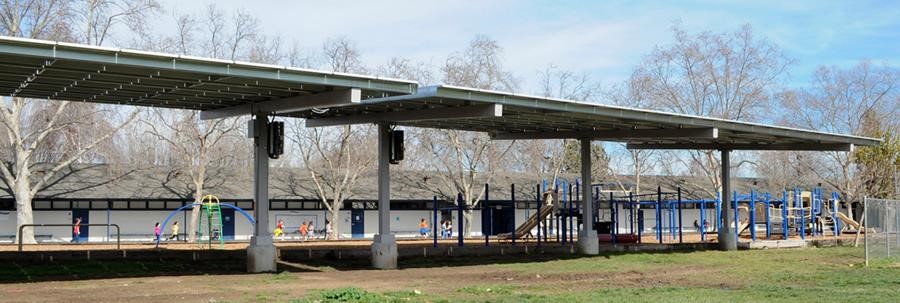Welcome to SV@Home’s Policy Rundown, your need-to-know overview of important housing policy actions and developments from the past two weeks.
Moffett Park: Sunnyvale to Hold Housing and Land Use Study Session Next Week
Next Tuesday, Sunnyvale will host the third in a series of Moffett Park Public Workshops focused on Land Use, Housing, Open Space, and Market Conditions. Following the consultant presentation, the City Council will hold a study session to provide feedback. You can find more information about the presentation and how to watch here.
SV@Home is urging Housers to come out to this meeting to learn about the housing potential in Moffett Park and to encourage the Council to study this potential as part of the planning process. Moffett Park presents a critical opportunity for Sunnyvale to create significant new residential capacity in a jobs-rich, transit-connected part of the city. Building housing and mixed-use developments in Moffett Park will enable Sunnyvale to transform the current office-only, surface parking-heavy area into a true Eco-Innovation District that integrates jobs, housing, new retail space, and more open space, all connected to transit and improved bike-ped infrastructure. And alongside the opportunity for new residential capacity comes the potential to harness new development to secure more deed-restricted affordable housing as a key community benefit.
So join us next Tuesday in advocating for housing as part of the city’s vision of the future Moffett Park.

San José Approves Downzoning of School District Land to Single Family Residential
On Tuesday, the San José City Council approved the Cambrian School District’s proposal to downzone its surplus school land to single family residential, which upended the potential for denser, affordable housing on the site. The school district had proposed a General Plan Amendment (GPA) to rezone its surplus school land from Public/Quasi-Public (PQP), which allows for up to 100 units per acre, to single family residential, at 8 units per acre. SV@Home believes that public land should be prioritized for affordable housing, especially given the challenges of identifying enough suitable land for affordable developments, and that we must maximize density given scarce land opportunities.
With the impending Housing Element revisions, we urged the City to prioritize and plan for more land for affordable housing, including school surplus lands zoned as PQP. The City is reviewing the PQP land use policy and had recommended that approval be delayed until this review process is completed, a position that SV@Home supported.
While we strongly disagree with the Council’s decision to set a precedent to significantly downzone public land, we look forward to reviewing staff’s completed PQP land use policy and advocating for future school surplus lands to be developed as affordable housing.

San José Approves Updates to City’s Inclusionary Housing Ordinance
On Tuesday in San José, the City Council approved the long awaited changes to the City’s Inclusionary Housing Ordinance. Inclusionary Housing Ordinances require developers to integrate affordable homes into new market-rate housing developments or provide another form of mitigation to meet the requirements, generally an in lieu fee. These policies have been adopted by most cities in the county, and generally require 15% of new units to be “affordable,” although the details vary.
The San José changes were prompted by two early trends: housing was getting increasingly expensive to build and fewer projects were moving forward, and nearly all of these projects were paying in lieu fees rather than building on-site. The new policy follows council’s direction to build more affordable units “on site,” and to address to the needs of moderate-income households otherwise not eligible for assisted units.
The primary focus of the council discussion revolved around how long the policy would be allowed to play out before it returned to council for review. Needless to say, these are incredibly uncertain times, and what recovery will look like for the housing market is difficult to predict. There was a broad consensus that the market would rebound more quickly in San José and Silicon Valley than elsewhere. The final motion took a piece of a memo from Mayor Liccardo, with some adjustments, and scheduled a review for the first quarter of 2024, and every five years thereafter.
The thrust of the new policy is designed around two important new elements. The first provides significant reduction in fees if 5% of the units are built for moderate income households on-site. The second allows developers to include affordable projects adjacent, or clustered, to market rate buildings.
In SV@Home’s comments to council we expressed our belief that each of these changes will result in more units built rather than exclusively collecting fees, and the “adjacent/clustering” option will allow leveraging of public funds to achieve more units at much deeper levels of affordability in more resource-rich areas where the market is strongest.

